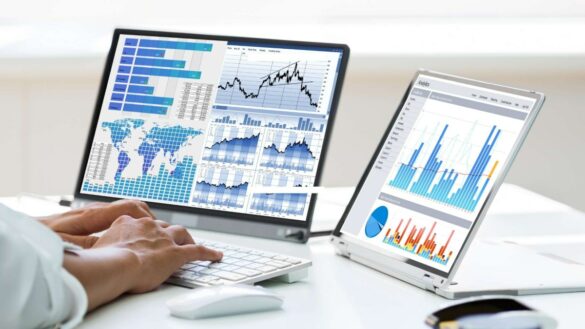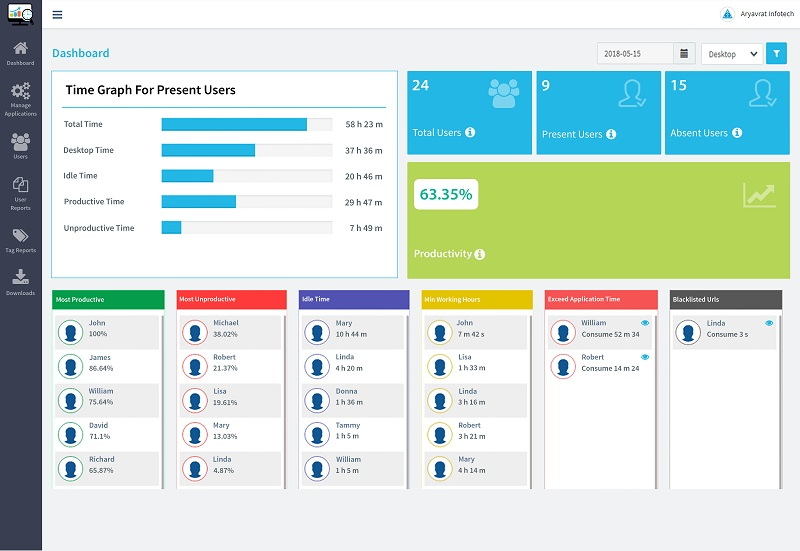The software for monitoring employees is a software that companies to track and monitor employees' activities. Employers can use it to collect information regarding a wide range of variables that relate to the behavior of employees. This can include internet use as well as application usage, keystrokes and screenshots. Software for employee monitoring is mostly used to increase productivity, check the compliance with corporate policies, safeguard sensitive data and address security issues. When you are choosing an employee monitoring program, you should consider several aspects. Here are some important points to consider: Features- Determine which features you need, based on the requirements of your company. Common features include monitoring activity, blocking websites keystrike logging, application usage tracking as well as email monitoring and reports generation. You should prioritize only those features that are relevant to your monitoring needs.
Privacy and Compliance: Make sure the software complies with all ethical and legal guidelines for monitoring employees. Be familiar with the laws and regulations in your region, including data protection and privacy laws. Consider software that offers transparent and configurable options to protect employee privacy.
User-Friendliness- Consider the software's simplicity of use and accessibility. The time will be reduced and the setup process streamlined if you have a simple interface and set-up process. Consider a dashboard that is customizable and intuitive reporting tools which allow you to quickly browse and analyze the collected data.
Integration and Compatibility: Ensure the compatibility of the software with your infrastructure. This includes operating systems, email applications, project management platforms, and collaboration tools. Compatibility is key to ensuring continuous monitoring without affecting your daily routine.
Data Security- Evaluate the software's security features to safeguard the collected data. Data encryption, data storage in a secure setting, access control, and conformity with security standards are all vital. Make sure that the company selling the software has a good security record and reliable security practices for data.
Scalability: The software must be able to scale up or down in line with the expansion of your business. If you plan to expand your team or open new locations in the future, choose a software solution that is easily scaled up to meet evolving needs.
Reporting and Analytics The software's analytics and reporting capabilities. Look for features that provide extensive insights into employee productivity, timing allocation, and trends. Customized reports and analytics will aid you in making informed decisions and identify areas for improvement.
Customer Support- Assess the level of customer support offered by the software vendor. Their availability, their level of support, as well as their response time are all important factors. Customer support that is prompt and responsive will give you help when issues arise.
Cost- Pay attention to the pricing model of the program. It could be a once-off payment, subscription based or usage based. Knowing the pricing structure as well as the additional costs, such as support, updates or additional features is vital. Be aware of the features and costs of each product.
Transparency and Communication with Employees - Maintain clear communication and transparency when working with employees in relation to monitoring software. Define the scope and function of the monitoring in a transparent manner. Discuss any concerns they may have as well as assure them of the confidentiality of their information.
You can make an informed decision by weighing these factors and choosing an employee monitoring program that will meet your needs and also protects the privacy of employees and satisfying legal standards. View the top employee monitoring software for website tips.

What Are The Features Of Employee Monitoring Software?
Employee monitoring software has many features for tracking and analyzing the activities of employees. Different software applications may have distinct features, however these are the most popular. It provides a comprehensive summary of the way employees spend their time at work.
Keystroke log- Keystroke logs all keystrokes typed by employees. It helps detect productivity bottlenecks and can also detect illegal actions and collect evidence for investigations.
Screenshots and Screen Recordings Certain software programs capture screenshots or record the screens of employees on a regular basis. This feature can be used to measure the efficiency of employees, verify the compliance of employees, or resolve problems.
Internet Usage Tracking This feature monitors employees' online activities, such as visited websites, search queries and downloads, among others. This feature helps to identify excessive browsing that is not related to work, potential security threats, and policies that are not being followed.
This feature monitors all the applications used by employees at work. It can help identify inappropriate or excessive usage of applications by providing insight into the applications frequented.
Email Monitoring- Employers are able to track emails received and sent by employees and their attachments as well as the content of the email. It helps ensure compliance with corporate policies, prevents leaks of data, investigates any suspicious activity and helps ensure that employees are in compliance.
File and Document Tracking - This function tracks file changes and access. It secures sensitive information, monitors document collaboration and ensures that the document is in compliance with security policy.
Remote Monitoring: Employers can to monitor employees remotely, or even if they are in various locations. It allows employers to track their work and increase productivity regardless of their physical location.
Productivity Analysis: Employee monitoring software usually includes productivity analysis tools that offer insights into employee productivity working patterns, work patterns, as well as time allocation. These analyses enable the identification of areas that can be improved and help optimize workflow.
Analytics and Reporting- Robust features for analytics and reporting generate detailed reports based on collected data. These reports give valuable insights regarding employee performance as well as the distribution of resources.
Compliance and Policy Management: Some software solutions include features that ensure the compliance of both company policies and regulations. Employers can define and enforce rules pertaining to acceptable computer use Internet access, acceptable usage, and data security.
Alerts and notifications - Alerts or notifications notify managers or employers of certain events or actions. For example, they could alert to excessive internet usage or attempts to access restricted websites, or suspicious behaviour.
Note that these features are included in a variety of software solutions for employee monitoring. Consider the features of software that are compatible with your monitoring objectives and adhere to the ethical and legal standards in your area of responsibility. Check out the most popular time tracking monitoring service company for website advice.

What Software Does The Employee Tracker Conform To The Compliance And Privacy Law
The software's ability to conform to compliance and privacy regulations is crucial. Here are a few methods that employee monitoring software complies with compliance and privacy laws, despite the fact that the requirements for compliance vary between different jurisdictions. Consent and notice- A majority of jurisdictions require informed consent by employees and require them to be informed of any the monitoring activity in advance. The software used to monitor employees typically has features that allow employers to explain their monitoring policies to employees in a clear manner. This could involve giving written notices, obtaining consent on consent forms, or creating a handbook for employees that outlines monitoring procedures.
Transparent Monitoring Policies: Transparent monitoring guidelines promote transparency by informing employees of the type of information being collected, the reason it's being tracked, and the extent of monitoring. Clear, comprehensive policies will allow employees to better comprehend their rights as regards of privacy, as well as the limitations of monitoring.
Data minimization is usually employed by employee monitoring software to ensure the compliance of privacy laws. The software collects and retains only the necessary data, while avoiding irrelevant or excessive data. By limiting data collection to that which is essential to monitor, the software reduces the risk of privacy and increases compliance.
Anonymization or Aggregation: Some software for employee monitoring collects and anonymizes data to safeguard the privacy of employees. The data collected is anonymized to eliminate personal information that can be identified as being personally identifiable. Data from multiple employees is compiled to give insights on a group-level without identifying individuals.
Secure data storage and encryption The security of the collected data is an important concern for software that monitors employees. It usually utilizes secure data storage practices and encryption methods to protect the data from unauthorised access, breach or accidental disclosure. This means that data is secured both during transit and in storage.
Access Controls and Restricted Permissions- For compliance purposes, employee monitoring software typically provides granular access controls and permissions. Employers can restrict access to monitoring information to those who require it for legitimate reasons for example, HR personnel and the designated administrator.
Rights of the Employee RightsRespecting the rights of employees is adhering to compliance and privacy laws. Software for monitoring employees has features that permit employees to see their own monitoring information and request changes. This allows employees to exercise their rights and seek remedies in case of privacy violations.
Compliance to Data Protection Regulations - Employee monitoring software is created to be in compliance with data protection regulations like the General Data Protection Regulation in the European Union (GDPR) or the California Consumer Privacy Act in the United States (CCPA). In order to comply, you must take the appropriate steps to protect the rights of data subjects and ensure lawful processing.
Note that, while monitoring employees can aid organizations adhere to regulations and laws However, they should also consult with lawyers and remain up-to-date with local regulations and laws. In order to comply with privacy and compliance regulations requires a thorough approach that goes far beyond the software, and includes clear policies, employee education, and ongoing compliance monitoring. Read the top rated employee monitoring services for more info.
